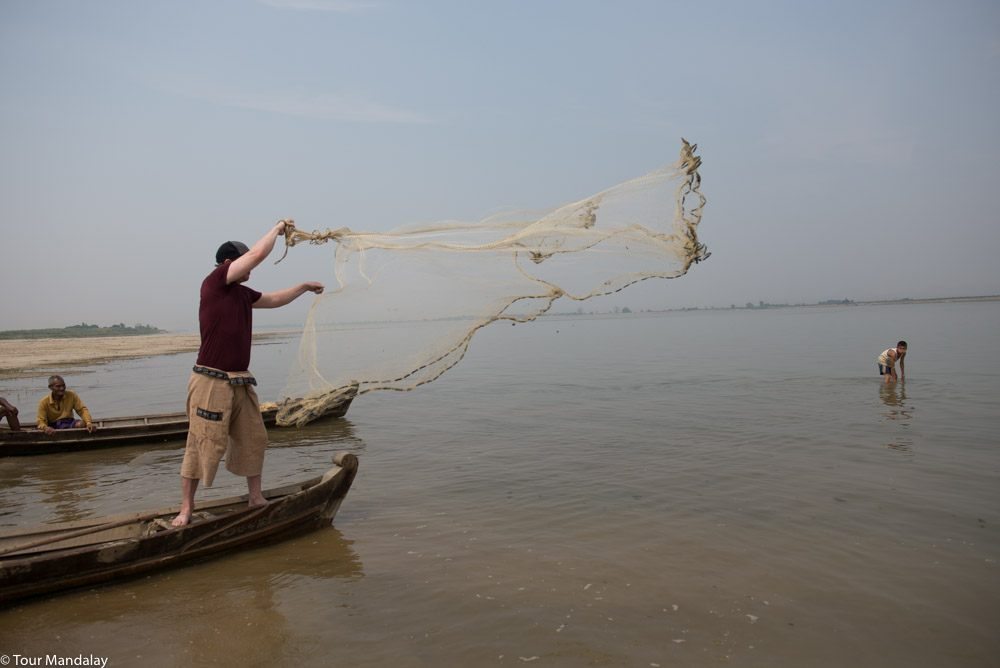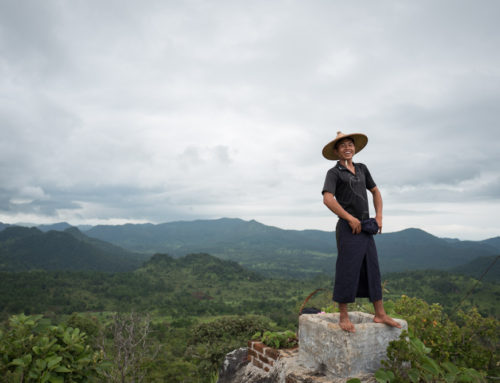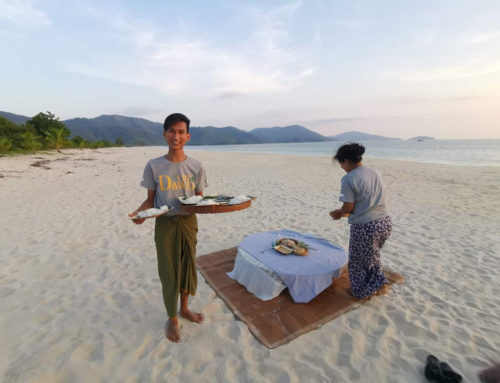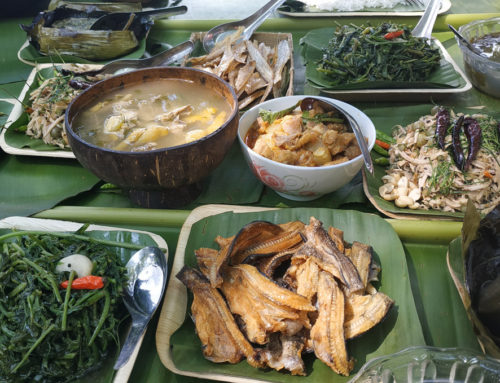The critically endangered Irrawaddy Dolphin, although not indigenous to Myanmar, is a beautiful mammal easily identifiable thanks to its blunt forehand and nose. Records apparently date back to ancient Chinese scriptures from 800AD when they were referred to as “river pigs”. At that time, it is thought this rare aquatic mammal inhabited the water as far west as India and as far east and south as Papa New Guinea. Sadly however, numbers have now reduced so drastically that they can now only be found in three of the world’s rivers: the Irrawaddy in Myanmar; the Mekong in Cambodia and Laos; and the Mahakham in Indonesia. It is likely that a population of less than 60 remain in the Irrawaddy, and 80-100 in each of the Mekong and Mahakham rivers.

A member of Tour Mandalay’s staff casts a full size fishing net on the bank opposite Hsithe village
With reports of a 30-year-old pregnant dolphin being washed up on shore only last month, killed by fisherman using an electric fishing technique in a protected area, there is clearly more that needs to be done to raise awareness and protect the population of this near-extinct species. NGOs such as the Harrison Institute and WCS are doing a great job of this, but in order for them to be truly successful, it is crucial that they receive support from international visitors. By doing so, it will be sure to attract attention from both inside and outside of the Myanmar, thus helping to further value and appreciate the dolphins as a “living resource”.
The dramatic decline also impacts the livelihood of the traditional fishing communities, many of whom have learnt to fish cooperatively with the dolphins in order to help increase their yield. As per the WCS website, “Through an elaborate communication system of calls and signals made by both dolphins and fishermen, the dolphins rear schools of fish towards the cast net fishing boats, signaling to the fishermen to throw their nets when the fish near close to the boat… This tradition is part of Myanmar’s rich natural and cultural heritage and is one of the best examples of a symbiotic relationship between man and nature.”
In a bid to support this conservation effort and to preserve Myanmar’s cultural heritage, Tour Mandalay would like to put forward the following excursion suggestions, which can easily be incorporated into “core” touring. One can be done as a day trip, and the other overnight.
Suggestion 1: Hsithe cooperative fishing experience, in association with the Harrison Institute
Suggestion 2: Overnight cooperative fishing experience, in association with WCS
DISCLAIMER: There is no guarantee you will see dolphins on any of these tours, but your involvement will help with conservation efforts and provide much needed monetary support to the fisherman that cooperatively fish and look out for them.





